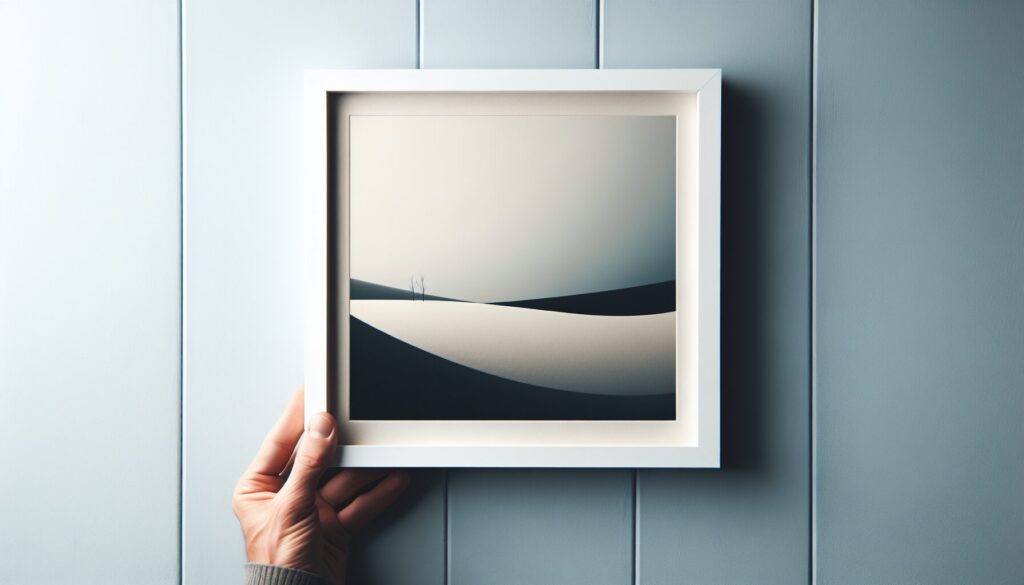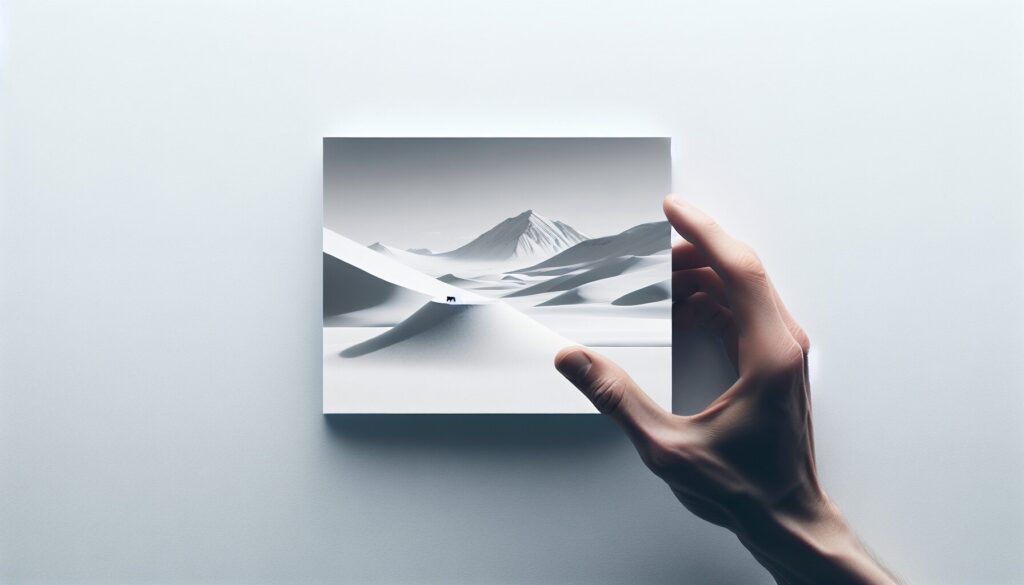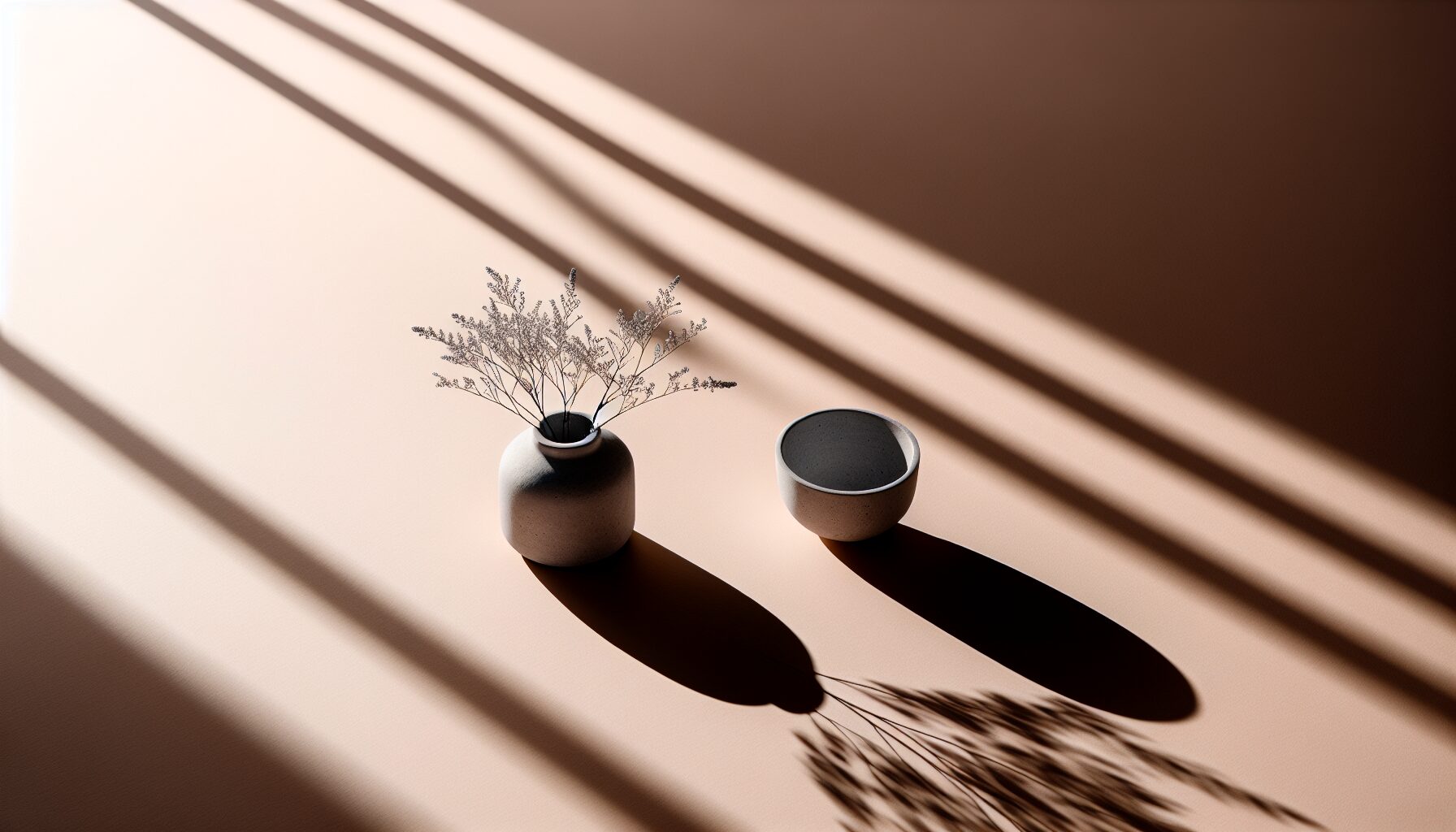Minimalist photography is about capturing simplicity and essence. It focuses on composition, light, and negative space. I remember using my Canon EOS R5 with a 50mm f/1.8 lens for a project. The goal was to isolate a single flower in a field. Setting the ISO to 100, I used f/16 to ensure sharpness and a slow shutter speed of 1/30s to capture just the right amount of ambient light. This approach allowed the flower to stand out against a blurred background, highlighting its delicate beauty. Techniques like using a polarizing filter can enhance contrast and remove unwanted reflections. It’s also crucial to consider the time of day for natural lighting. Early morning or late afternoon provides softer light and long shadows, which are ideal for this style. National Geographic showcases many stunning examples of this genre, offering inspiration and insights into mastering the art of minimalist photography.
Related: The Ultimate Guide to Minimalist Photography
Essential Gear for Minimalist Photography
Starting with the right gear is crucial for minimalist photography. A camera with manual controls is essential. I prefer using the Canon EOS R5 for its versatility and high-resolution capability. A 50mm f/1.8 lens is perfect for capturing those crisp, focused shots with a beautifully blurred background. This lens helps emphasize the subject by isolating it from the surrounding clutter. Additionally, shooting in RAW format offers greater flexibility in post-processing, allowing more control over the final image.
Light is your best friend. Natural light often provides the best results in minimalist photography. I remember shooting at dawn with my Canon EOS R5 set to ISO 100, f/16, and a shutter speed of 1/30s. The soft, diffused light created a serene atmosphere, enhancing the simplicity of the scene. A tripod can also be beneficial in such low-light conditions, ensuring sharp images without increasing ISO.
Accessories and Techniques
A polarizing filter is another valuable accessory. It reduces reflections and enhances color saturation, especially in outdoor settings. This technique can transform an ordinary scene into something extraordinary. Moreover, a simple backdrop can work wonders. I once used a plain white wall to photograph a solitary flower. The contrast between the bright background and the vibrant subject was striking.
National Geographic emphasizes the importance of composition in minimalist photography. It’s all about finding the balance between negative space and the focal point. Finally, keep your gear minimal. A lightweight camera bag with just the essentials encourages focus and creativity. This approach allows you to concentrate on capturing the essence of simplicity.
Techniques for Capturing Minimalist Images

One of the most effective techniques in minimalist photography is the use of negative space. This involves leaving a large portion of the frame empty to draw attention to the subject. When I first experimented with this technique using my Canon EOS R5 paired with a 50mm f/1.8 lens, I was amazed at how it transformed my images. Setting my camera to ISO 100 and using an aperture of f/16 allowed me to achieve sharp focus on the subject while maintaining a beautifully blurred background.
Additionally, focusing on simplicity and clean lines can greatly enhance the minimalist aesthetic. I often shoot architectural structures using a polarizing filter to eliminate reflections and enhance contrasts. This technique has been particularly effective when photographing buildings around Bauhaus Museum. I prefer using a tripod to stabilize my camera, especially in low-light conditions, ensuring crisp and clear lines.
Lighting and Composition
Lighting plays a crucial role in minimalist photography. Early morning or late afternoon light, known as the golden hour, provides a soft and diffused quality that complements minimalist compositions. I remember capturing a stunning seascape with my Canon EOS R5 during sunset. Adjusting the shutter speed to 1/30s, I was able to capture the smooth motion of the waves against a solitary rock.
For those interested in exploring minimalist techniques further, National Geographic offers excellent resources on composition and lighting. A recent study by National Geographic highlights the importance of composition in creating impactful minimalist photographs. Experimenting with different angles and perspectives can also add an element of surprise, keeping the viewer engaged while maintaining simplicity.
Inspiring Examples of Minimalist Photography

One of the most compelling examples of minimalist photography is a lone tree standing against a vast, open sky. This kind of shot strips away distractions, allowing the viewer to focus on the tree’s intricate details. When I first captured such an image, I used a Canon EOS R5 with a 50mm f/1.8 lens. Setting the ISO to 100 and the aperture to f/16, I achieved sharpness and depth. The shutter speed of 1/30s captured the scene with perfect clarity. This approach emphasized the tree’s silhouette against a soft, pastel sky, creating a serene and powerful composition.
In urban settings, minimalist photography can be equally striking. I once photographed a single yellow umbrella on a slate-gray pavement using a Sony A7III. The simplicity of the color contrast was enhanced by the lens choice—a 35mm f/2.8. By adjusting the camera to ISO 200 and using a wide-open aperture, I isolated the umbrella, making it pop against the muted background. This technique highlights how minimalist photography can transform ordinary scenes into captivating visual stories.
Exploring Minimalism in Nature
Nature provides countless opportunities for minimalist imagery. Consider the iconic image of a snow-covered field with a single red barn. I captured a similar scene with a Nikon D850 and a 24-70mm f/2.8 lens. Setting the camera to ISO 64 and selecting an aperture of f/11, I achieved a balance between detail and simplicity. The use of a polarizing filter helped to enhance the contrast between the red barn and the snow, making the image more compelling. Such images remind us of the beauty in simplicity and the power of minimalism to evoke emotion.
For those eager to delve deeper into these techniques, exploring the ultimate guide to minimalist photography can provide further insights and inspiration. Additionally, photographers like Michael Kenna and Hiroshi Sugimoto have mastered the art of minimalism, offering a wealth of inspiration through their work.
Common Mistakes and How to Avoid Them
One common mistake in minimalist photography is overcomplicating the composition. Minimalism thrives on simplicity, which I learned firsthand during a sunrise shoot with my Canon EOS R5. I used a 50mm f/1.8 lens, setting the aperture to f/16 to capture a clean, crisp horizon. The key is to focus on a single subject and eliminate distractions. Additionally, pay attention to your background. A busy background can detract from the minimalist aesthetic. During a shoot at the beach, I adjusted my position to use the clear sky as my backdrop, enhancing the subject’s prominence.
Another pitfall is neglecting negative space. Negative space can enhance the subject’s impact. I once captured a lone tree in a field with my Nikon D850, using a 35mm lens. The wide angle allowed ample negative space, amplifying the tree’s isolation. It’s vital to use negative space effectively to draw the viewer’s eye.
Exposure and Lighting
Exposure mistakes are also prevalent. Bright environments can lead to overexposed images. I recommend adjusting the ISO to 100 and using a polarizing filter to manage bright light. Proper exposure is essential for maintaining detail in minimalist shots. Furthermore, lighting plays a crucial role. Natural light can be your best friend, especially during golden hours. I remember capturing a silhouetted bridge with my Sony A7 III, using the soft morning light. The interplay of light and shadow added depth without cluttering the image.
Finally, avoid the temptation to over-edit. Minimalist photography should feel natural. I prefer to use Adobe Lightroom sparingly, ensuring edits enhance rather than overpower the image. Learning from organizations like International Center of Photography can expand your understanding of minimalist techniques and prevent these common errors.
Conclusion
To sum up, minimalist photography emphasizes simplicity through careful composition, lighting, and the use of negative space. Essential gear, like a camera with manual controls and a lens that isolates subjects, complements this style by capturing crisp, focused images with beautifully blurred backgrounds. Techniques such as using polarizing filters, considering natural lighting, and maintaining minimal equipment enhance the minimalist aesthetic. Avoiding common pitfalls, such as overcomplicating compositions and over-editing, ensures the purity of the imagery. By focusing on clean lines and effective use of negative space, photographers can create powerful, emotion-evoking images. Inspiration and insights from resources like National Geographic and renowned photographers further enrich one’s journey into minimalist photography. Happy shooting!
Continue Exploring
Ready to transform your photography skills with simplicity and elegance? Dive into the world of minimalist photography and unleash your creativity.
Frequently Asked Questions
What are some essential tips for beginners in minimalist photography?
To get started with minimalist photography, focus on simplicity and clarity. Begin by choosing a strong subject and eliminate any distracting elements from your composition. Use negative space effectively to draw attention to the subject. Pay attention to light and shadows, as they can add depth and interest to your images. Experiment with different perspectives and angles to create unique compositions.
How can I use negative space effectively in minimalist photography?
Negative space is crucial in minimalist photography as it enhances the subject by providing it with breathing room. To use negative space effectively, try to balance the main subject with ample empty space around it. This can help emphasize the subject and lead the viewer’s eye directly to it. Experiment with different compositions to find the right balance that enhances your photograph’s minimalist appeal.
What camera settings are ideal for capturing minimalist photos?
When capturing minimalist photos, the ideal camera settings depend on the lighting conditions and the effect you want to achieve. Generally, use a low ISO setting to minimize noise, and adjust the aperture to control the depth of field. A smaller aperture (higher f-number) can keep more of the scene in focus, while a larger aperture (lower f-number) can isolate the subject by blurring the background. Adjust the shutter speed to maintain proper exposure, and consider using a tripod for stability if you’re shooting at slower shutter speeds.


Leave a Reply